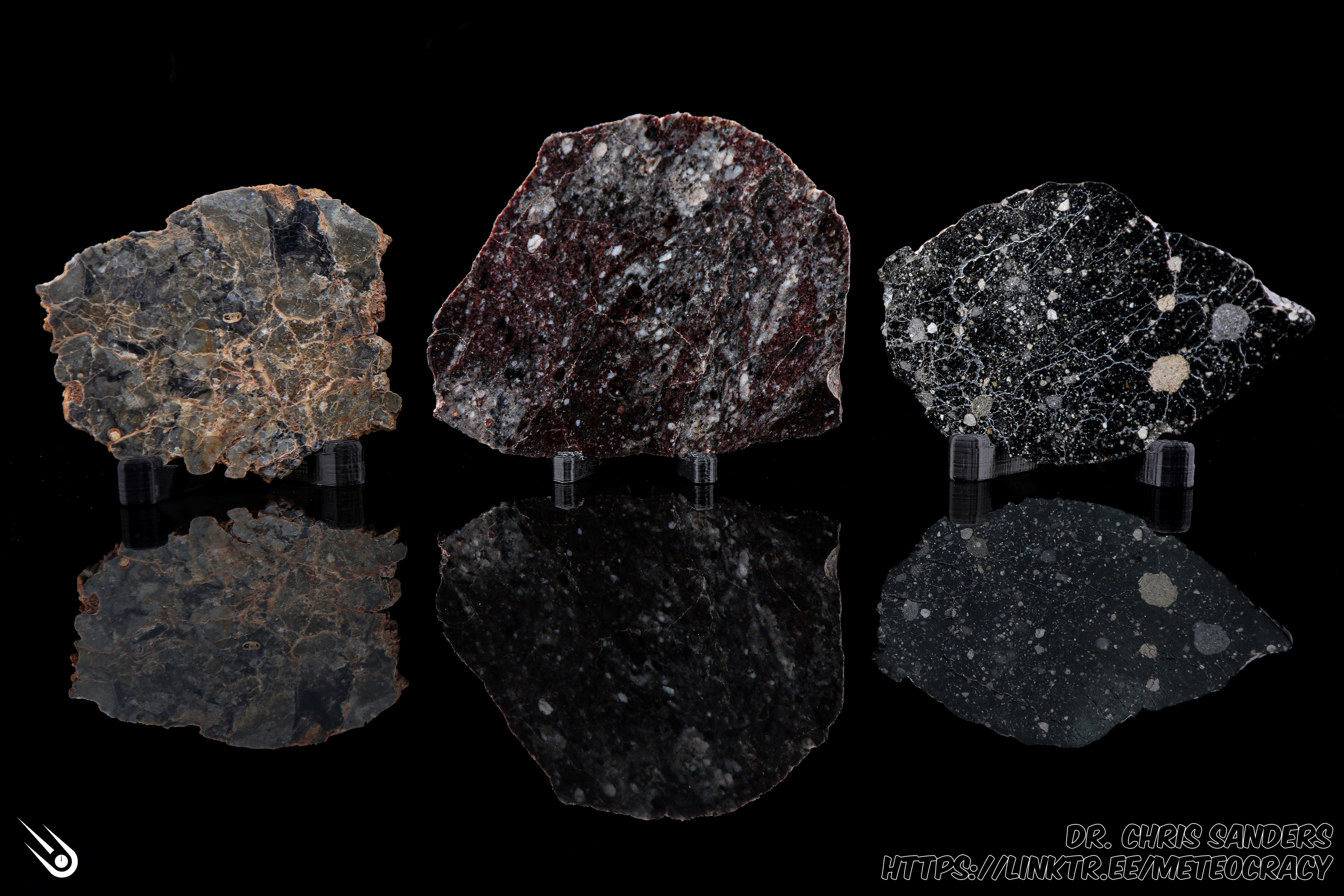My photo submission for the 2026 Meteorite Calendar... three lunar stones from my collection, titled "Colors of the Moon". While we primarily think of the moon as a uniform shade, there's a lot more there than what initially meets the eye!
Discussion
Loading...
Post
The grey-white slice (left) is Adrar 17, a troctolitic anorthosite. It's an ancient piece of the Moon’s highlands crust rich in pale plagioclase with some olivine.
The dark NWA 14577 end cut (right) is a fragmental breccia; a mixture of broken lunar rock and glass fused together by impacts. They likely come from highland regolith where light clasts are mixed into a darker matrix.
The reddish NWA 17405 end cut (center) is quite unique. Scientists believe it gets its color from aqueous alteration... ancient water on the moon! The stone is also a fragmental breccia, which constitutes the main mass of the recovery.
Open Science
We are a network of scientists, developers and organizations building the next generation of digital spaces for open science.
Manual federation enabled
